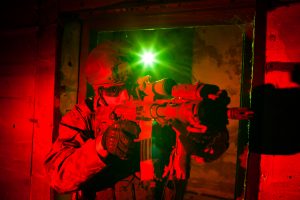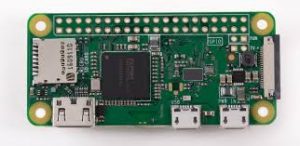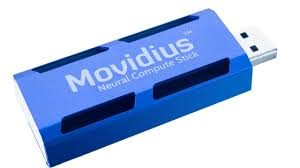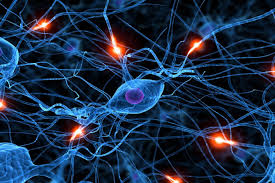One of our projects requires that we determine level of threat and intent in a very hostile environment.

A good starting point is to describe the context of the work environment. There are men and women that work in high stress environments. Because of this stress, their body/brain reacts by settling into a survival mode. Their senses focus on getting through the task. Field of vision narrows and focus is on small area — what is deamed to be the immediate threat. Hearing is hampered by the chaotic surroundings and the brain often prioritizes auditory input at a very low level,
One way to start solving the problem is to partition the problem. One of the areas that we address is vision. The goal is to minimize threats, sort the innocent, prioritize the level of threat and do it in the two to three second range. In other words, enhance visual sensory input and recommend intent in real time.
 Most folks have seen military and law enforcement wearing head and body cameras. The advantages are obvious. However, simply collecting a video stream was not enough for what we wanted. We needed a camera that extended the vision of the officer or operator. And we needed a platform that could infer — if a weapon is pointed at someone, is that someone a threat. It is one thing to detect a weapon — perhaps a knife or gun. It is another thing to collect multiple visual cues and decide whether there is a threat and if so. the level of threat. We concluded that we needed to mount a platform on a weapon system, collect data that described context, draw conclusions and offer advice in the critical two second time frame.
Most folks have seen military and law enforcement wearing head and body cameras. The advantages are obvious. However, simply collecting a video stream was not enough for what we wanted. We needed a camera that extended the vision of the officer or operator. And we needed a platform that could infer — if a weapon is pointed at someone, is that someone a threat. It is one thing to detect a weapon — perhaps a knife or gun. It is another thing to collect multiple visual cues and decide whether there is a threat and if so. the level of threat. We concluded that we needed to mount a platform on a weapon system, collect data that described context, draw conclusions and offer advice in the critical two second time frame.
We were bound by practical considerations. The platform:
- Must be mountable to a rail system
- The platform must consume little power — at least 8 houurs before charging.
- The platform must support enough compute power to draw inferences – classification across a video stream in a hostile environment.
As luck would have it, everything came together.

The above image is that of a Raspberry Pi Zero W. I can just about cover it with a credit card. Not exactly a super computer, but a good start for a robust platform.

Now here is we really get lucky, Intel realizes the enormous potential market gained from enabling IOT devices with an add on that reduces inferencing time by a factor of 5 to 10 times that of the gpu on the Pi device. And the device is designed for image classification problems.

The hardware opens up enormous possibilities. But Intel makes it even easier to get started with classification. Intel taps into Caffe from Berkely and provides examples using AlexNet, GoogLeNet, and for minimization of resource utilization, SquezzeNet. All providing inferencing to the PI Zero.
Will keep you updated.
troy@biosension.com
www.biosension.com
